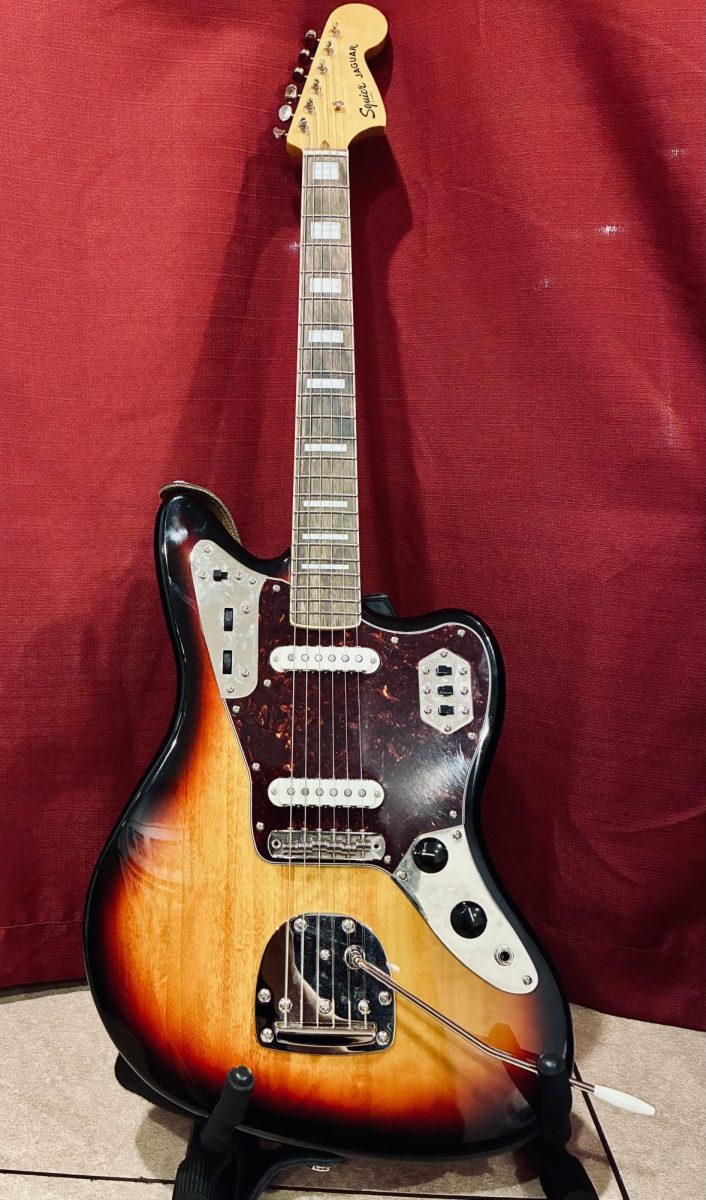When talking about electric guitars, it is difficult to think of a more iconic brand than Fender. Their Stratocaster and Telecaster guitars have had immense success since the 1950’s and in a way have become a cultural center point of the electric guitar world. Since then, while Fender has released many other models of guitars, they continue to be overshadowed by their bigger brothers.
These other models of guitars, including the Jaguar, Jazzmaster, and Mustang, failed to appeal to their target market, and never sold well. Because of their failure to sell, it was easy to find these models in guitar stores and pawn shops all over the world, usually accompanied with a cheap price.
Meanwhile, the alternative scene was looking for a way to differentiate themselves from the ‘establishment’ music. The Stratocaster and Telecaster were considered too mainstream for them, so when they stumbled upon these inexpensive, forgotten models of guitars in stores, they snatched them up. Names such as Kurt Cobain (Nirvana), Kevin Shields (My Bloody Valentine), Johnny Mar (The Smiths), J. Mascis (Dinosaur Jr.), and Robert Smith (The Cure) all used these offset guitars. Even John Frusciante of the Red Hot Chili Peppers was especially fond of the Jaguar.
Some of these names took their search for originality even further. Kurt Cobain had outfitted his Jaguar with humbuckers and often used duck tape to lock the pickups in the bridge position, allowing him to thrash onstage with huge amounts of distortion. Kevin Shields used duck tape to modify the tremolo, allowing him to use the arm while strumming, creating a detuned, chorus-y effect. When layered and combined with distortion, it created a wall of fuzzy and ethereal sounding noise.
And that’s how offset guitars got their reputation as an ‘indie’ music machine. Squier, a sub-brand of Fender, manufactures a ‘Classic Vibe’ Jaguar inspired by the vintage music instruments that kicked off an alternative music revolution. The ‘Classic Vibe’ line of instruments has a reputation for quality instruments with a moderate price.
I purchased the Classic Vibe Jaguar for around $450 brand new off the Fender website. My first impression was how large the actual body of the instrument was. It seemed much proportionally larger than my Stratocaster. Another thing I noticed was that the fretboard was extremely dry. I didn’t own any fretboard oil, so I just played it a lot and let the oils from my fingers transfer over, which seemed to help.
One of the most obvious things about playing the Jaguar is the short scale length. Instead of the Fender standard 25.5 inches, the Jaguar comes in at 24 inches. This makes chords and long stretches across frets easier, but makes the higher frets really small, which makes solos a little harder. Also, Fender ships all of their guitars in .9 gauge strings. For a short scale guitar like the Jaguar, this is ridiculously slinky and hard to play well. I recommend switching to .11 gauge strings, which feel sturdier and resonate better.
The offset body makes the Jaguar extremely comfortable to play sitting down or standing up. The contours mold almost perfectly to a human body. The bridge is located high up on the body, so there is an adjustment period of learning where to strum.
The tremolo system is comfortable and convenient, although I wished it could dive down a bit further like the system on a Stratocaster. Also, there is a slight creaking noise when I use it, so there is likely a part that needs to be lubricated.
The neck pickup is lush and full. I lowered it a little bit to hit a sweet spot. It sounds similar to a Stratocaster neck pickup. The bridge pickup was especially shrill and ‘ice pick-y’ although the Jaguar is known for that sort of sound. When the neck and bridge pickup are on together, the lush pickup balances out the treble on the bridge pickup, creating a very nice sound overall. Also this configuration reduces some of the single-coil hum, since they are wound in opposite directions. There is a ‘strangle’ switch as well, which cuts off some of the low end. This is useful for cutting through a mix without making the whole thing muddy.
There is a rhythm circuit as well, which has its own separate switch. It’s the neck pickup only, and has some of the top end rolled off. It’s unique, and when combined with distortion sounds a little like a fuzz pedal. Nothing super special however, and I’m not convinced the sound is so different from just rolling the tone knob back anyways. One cool thing you can do is turn the volume all the way down on the rhythm circuit and use the switch as a makeshift kill switch. It’s a cool effect and pretty fun, but the switch isn’t super maneuverable for this purpose, however.
All in all, the Squier Classic Vibe Jaguar is a unique and fun instrument for anyone looking for an alternative to the common models of guitars. The quality to price ratio is excellent, as is the case for most Squier guitars, and it offer a great blend of vintage style and modern playability.

